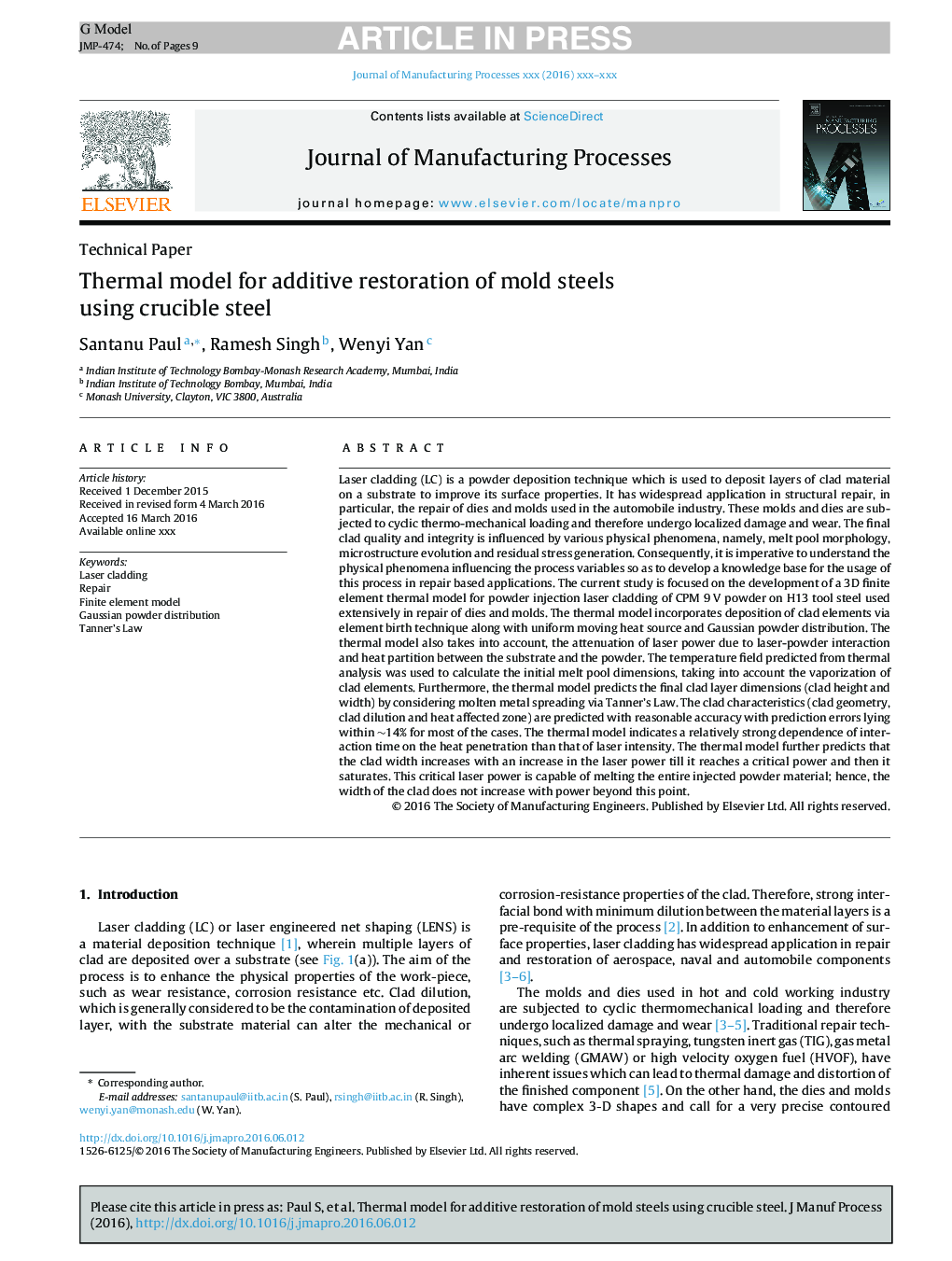| کد مقاله | کد نشریه | سال انتشار | مقاله انگلیسی | نسخه تمام متن |
|---|---|---|---|---|
| 8048112 | 1519232 | 2016 | 9 صفحه PDF | دانلود رایگان |
عنوان انگلیسی مقاله ISI
Thermal model for additive restoration of mold steels using crucible steel
ترجمه فارسی عنوان
مدل حرارتی برای ترمیم افزودنی از فولادهای قالب با استفاده از فولاد تیتانیوم
دانلود مقاله + سفارش ترجمه
دانلود مقاله ISI انگلیسی
رایگان برای ایرانیان
کلمات کلیدی
روکش فلزی لیزری، تعمیر، مدل عنصر محدود توزیع پودر گاوسی، قانون تنر،
موضوعات مرتبط
مهندسی و علوم پایه
سایر رشته های مهندسی
مهندسی صنعتی و تولید
چکیده انگلیسی
Laser cladding (LC) is a powder deposition technique which is used to deposit layers of clad material on a substrate to improve its surface properties. It has widespread application in structural repair, in particular, the repair of dies and molds used in the automobile industry. These molds and dies are subjected to cyclic thermo-mechanical loading and therefore undergo localized damage and wear. The final clad quality and integrity is influenced by various physical phenomena, namely, melt pool morphology, microstructure evolution and residual stress generation. Consequently, it is imperative to understand the physical phenomena influencing the process variables so as to develop a knowledge base for the usage of this process in repair based applications. The current study is focused on the development of a 3D finite element thermal model for powder injection laser cladding of CPM 9 V powder on H13 tool steel used extensively in repair of dies and molds. The thermal model incorporates deposition of clad elements via element birth technique along with uniform moving heat source and Gaussian powder distribution. The thermal model also takes into account, the attenuation of laser power due to laser-powder interaction and heat partition between the substrate and the powder. The temperature field predicted from thermal analysis was used to calculate the initial melt pool dimensions, taking into account the vaporization of clad elements. Furthermore, the thermal model predicts the final clad layer dimensions (clad height and width) by considering molten metal spreading via Tanner's Law. The clad characteristics (clad geometry, clad dilution and heat affected zone) are predicted with reasonable accuracy with prediction errors lying within â¼14% for most of the cases. The thermal model indicates a relatively strong dependence of interaction time on the heat penetration than that of laser intensity. The thermal model further predicts that the clad width increases with an increase in the laser power till it reaches a critical power and then it saturates. This critical laser power is capable of melting the entire injected powder material; hence, the width of the clad does not increase with power beyond this point.
ناشر
Database: Elsevier - ScienceDirect (ساینس دایرکت)
Journal: Journal of Manufacturing Processes - Volume 24, Part 2, October 2016, Pages 346-354
Journal: Journal of Manufacturing Processes - Volume 24, Part 2, October 2016, Pages 346-354
نویسندگان
Santanu Paul, Ramesh Singh, Wenyi Yan,
